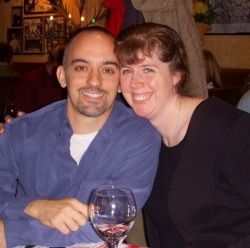I’m not even going to try to wrap my head around the reports that 9,500 people from just one town were all swept up in the tsunami in addition to all the other losses, but I will take comfort in not hearing much in the way of damage in Tokyo. That means that all the seismic designs that we implement should work when our country gets hit with another massive earthquake. That is something that I can comprehend and move forward in my life with. I’m not even remotely saying that it means your private residence is safe from even partial collapse in an earthquake, but it does mean that the modern structures that are designed to current codes and seismic loads should behave the way we want them to. That’s what lets the structural engineer sleep at night.
So why did I title this blog post “Another Wake-up Call”? Because I had just posted on February 22nd about Earthquake Preparedness following the New Zealand earthquake and it is now even more obvious how timely this information is. The “Ring of Fire” around the Pacific Ocean has just unleashed 7.0 and 7.1 earthquakes in Chile and Argentina on January 1st and 2nd of this year, New Zealand has had up to 7.0 earthquakes in the area since September of last year, and Japan’s 7.2 quake two days before the 9.0 was enough to get us talking about the fact that the Pacific Plate is on the move. The only quadrant that hasn’t had a major subduction earthquake in the last 400 years is the Northwest coast of the U.S. where the Juan de Fuca plate is located. Those great earthquakes arrive about every 400 years, which is not a good statistic for those of us who live in the Pacific Northwest.
What does it really mean? That anyone on the western coast of the U.S. has had ample warning to be prepared in the event of an earthquake. Even though the subduction zone quake will only happen between about Crescent City in California and up through Oregon and Washington into British Columbia, California still needs to be equally prepared. The more they study the history of the earthquakes, the more they find to support the theory that the great subduction earthquakes actually trigger San Andreas Fault quakes. Fun right?
So what is the progress of my emergency shed? I got some new Rubbermaid Roughneck storage boxes that fit the dimensions of the shed a little better and have transferred the supplies that I had compiled before into these more durable containers. I made a list from all the sites that I had mentioned in my previous post and have been making sure to get the last of the items into the shed – we didn’t have our set of adult clothes and shoes in there, I hadn’t put any towels in before, our water storage had diminished over time and moving to new houses, and we even are adding more in the way of entertainment – a deck of cards, some dice games, coloring books with colored pencils. I’m going to revamp the food storage at some point too, and am excited about some of the new backpacking recipe books that I have that would work for the food supply portion as well.
My only request at this point is for the earthquake to not happen when I’m not with my family. Wishful thinking, I know. What do you have in your emergency survival box?

 RSS Feed
RSS Feed